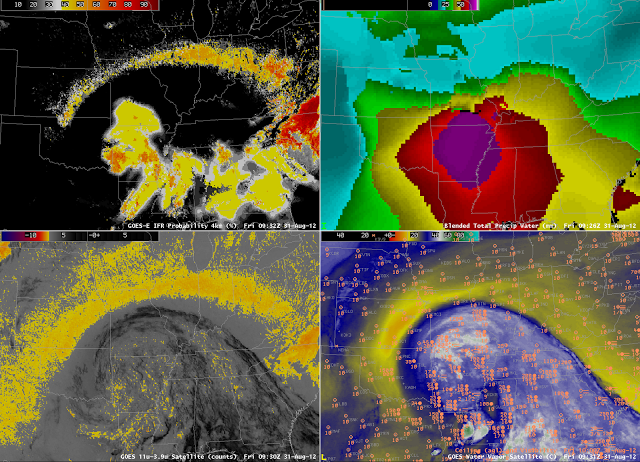The driving mechanism in the brightness temperature difference product, the heritage method for detecting fog and stratus from satellites, keys on differences in the emissivity of water clouds at 3.9 µm versus the emissivity at 10.7 µm. Water clouds do not emit 3.9 µm radiation as a blackbody does, but they do emit 10.7 µm radiation almost as a blackbody.
As ground dries out in a drought, its emissivity changes. Those changes are a function of wavelength. This example is from early morning on 31 August, as the remnants of Isaac slowly spread northward. The brightness temperature difference shows a strong signal around the cirrus canopy of the storm. These highlighted regions arcing from Kansas to Illinois have suffered extreme drought all summer. The satellite signal is so strong in this case over the very dry Earth — because of the changed emissivity properties of the parched Earth — that it cannot be overcome by the model parameters that are used. As a result, IFR probabilities are high over Indiana and Illinois where no IFR conditions are observed.

